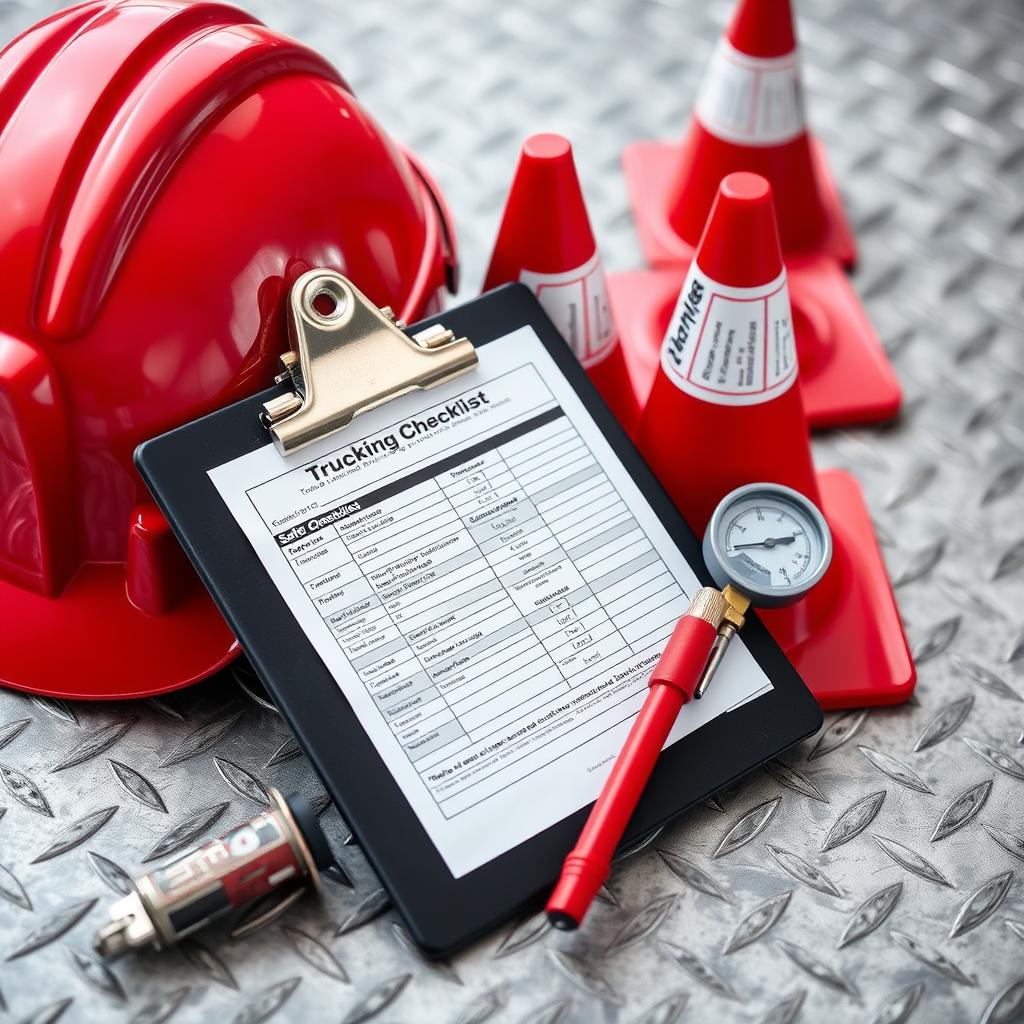Welcome to our blog! Today, we’re diving into a vital topic that affects everyone in the trucking industry: safety compliance. Trucking is an essential part of the economy, but it comes with its own set of challenges, especially when it comes to maintaining safety standards. So, how do you ensure that your operations are in line with safety regulations? Let’s explore 10 essential tools that can help you stay compliant and, importantly, keep everyone safe on the road!
1. Electronic Logging Devices (ELDs)
Have you ever found yourself wondering, “How do I keep track of my hours on the road?” That’s where Electronic Logging Devices (ELDs) come into play. These nifty devices monitor driving time, helping drivers adhere to the Hours of Service (HOS) regulations.
- Benefits:
- Automated tracking of drive time and rest periods.
- Reduced paperwork and simplified compliance documentation.
- Enhanced safety through better scheduling of driving hours.
Investing in an ELD system not only helps you stay compliant but also keeps your drivers safer and healthier by preventing fatigue.
2. Compliance Management Software
Keeping track of all the regulations can be overwhelming. Compliance management software streamlines the entire process, providing crucial features for managing documents, certifications, and audits.
- Key Features:
- Document management for easy access to vital records.
- Automated reminders for license renewals and inspections.
- Real-time compliance tracking and reporting tools.
This tool not only saves time but can also significantly reduce the likelihood of missing important compliance deadlines.
3. Vehicle Inspection Apps
Performing routine vehicle inspections is a must, but it can be a tedious process. Enter vehicle inspection apps! These handy tools help streamline the inspection process by digitalizing it.
- Advantages:
- Mobile access for conducting inspections anytime, anywhere.
- Instant reporting and documentation storage.
- Integration with ELDs and compliance software for comprehensive compliance checks.
These apps significantly enhance accountability and ensure that inspections are thorough and well-documented.
4. Safety Training Programs
A well-trained driver is a safe driver. Implementing comprehensive safety training programs will go a long way in ensuring compliance and reducing accidents.
- Training Topics to Include:
- Defensive driving techniques.
- Hazardous materials handling.
- Emergency response protocols.
Regular training sessions not only improve compliance with safety regulations but also elevate the overall safety culture within your organization.
5. Incident Reporting Software
Accidents can happen, even with the best preventive measures in place. Having a solid incident reporting system can help you analyze accidents and improve safety compliance.
- Key Features:
- Simplified incident reporting with mobile access.
- Data analysis tools to identify trends and areas for improvement.
- Integration with insurance and legal requirements.
This kind of software helps to ensure that lessons are learned from incidents, fostering a safer working environment.
6. Fleet Tracking Systems
Keeping an eye on your fleet is crucial for safety and compliance. Fleet tracking systems provide real-time GPS tracking and performance analytics.
- Benefits:
- Real-time location tracking to enhance route safety.
- Monitoring of driver behavior for safety compliance.
- Fuel efficiency insights to reduce operational costs.
With fleet tracking, you can proactively manage your drivers and help them navigate more safely and effectively.
7. Safety Checklists
Who doesn’t love a good checklist? Having a standardized safety checklist ensures that nothing is overlooked during pre-trip and post-trip inspections.
- What to Include:
- Tire pressure and condition checks.
- Brake system evaluations.
- Operational checks for lights and signals.
Providing drivers with checklists not only ensures consistency in inspections but also fosters a sense of accountability for vehicle safety.
8. Maintenance Management Software
Keeping a maintenance schedule prevents breakdowns and accidents, and maintenance management software makes this process much easier.
- Advantages:
- Automated reminders for scheduled maintenance.
- Tracking of parts replacements and repairs.
- Data analytics for optimal maintenance scheduling.
With the right maintenance management software, you’ll avoid costly surprises and keep your fleet running smoothly.
9. Regulatory Compliance Resources
Staying on top of evolving regulations is critical. Utilizing regulatory compliance resources, including online databases and networks, is a great way to keep informed.
- Resources to Explore:
- FMCSA’s website for updates on HOS regulations.
- Industry organizations that offer newsletters and training seminars.
- Online forums for discussion with industry peers.
Being proactive about compliance means you’re less likely to face penalties and more likely to foster a safety-first environment.
10. Continuous Improvement Programs
Lastly, embracing a culture of continuous improvement ensures that compliance becomes part of your company’s ethos. Consider establishing programs that evaluate safety initiatives regularly.
- Strategies to Implement:
- Regular safety audits and assessments.
- Encouraging driver feedback about safety practices.
- Incentive programs for safe driving records.
When safety compliance becomes a regular part of your operations, you’re setting the stage for a more secure and efficient work environment.
Conclusion
In summary, ensuring trucking safety compliance is a multifaceted endeavor that requires the right tools, training, and culture. By integrating these ten essential tools into your operations, you can create a safer environment for drivers, cargo, and everyone else on the road.
Remember, safety is not just about following regulations; it’s about promoting a culture that prioritizes the well-being of everyone involved. So why wait? Start incorporating these tools today and drive your way to compliance!
Have any questions or want to share your experiences with trucking safety compliance? Feel free to drop a comment below!







